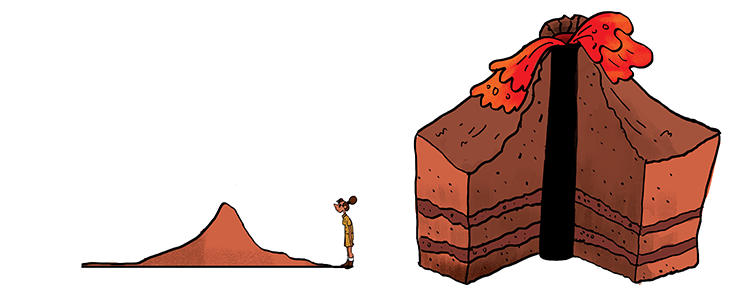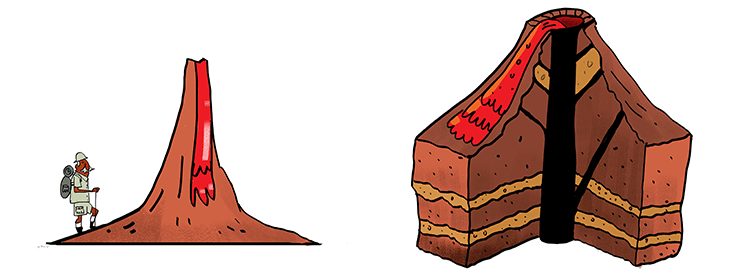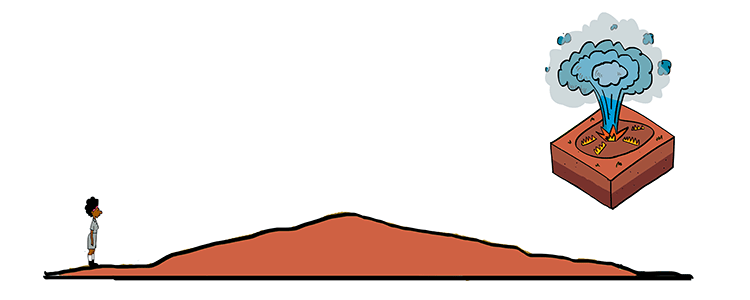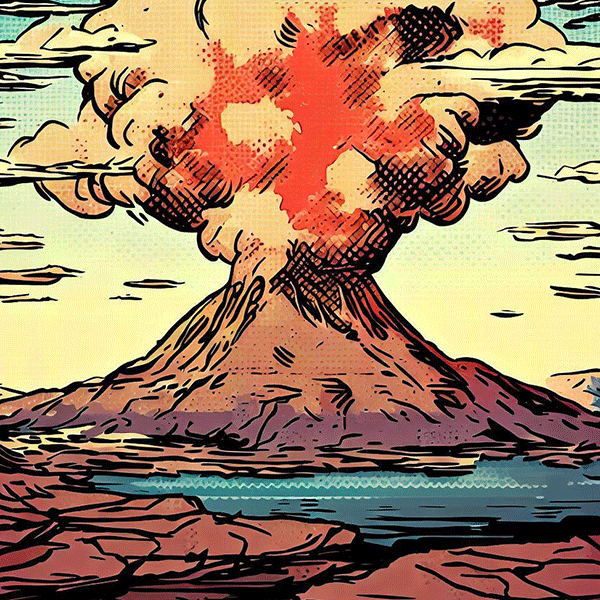What’s a Volcano?
Imagine a giant mountain that sometimes spits out hot, glowing stuff from its top. That’s what we call a volcano! A volcano is like a door in the ground that lets out hot, melty rock and other things from deep inside Earth.
Why Do Volcanoes Erupt?
You know when you shake a soda bottle really hard, and then it sprays out when you open it? Well, volcanoes are kind of like that for Earth. They are places where big pieces of Earth’s crust, called tectonic plates, are moving apart or coming together. When too much pressure builds up… BOOM! The volcano erupts!
Types of Volcanic Eruptions
Did you know there are different ways a volcano can erupt? Let’s talk about two common types:
- Effusive Eruptions: These are like slow, oozing eruptions where the melty rock (which we call magma) isn’t very sticky, so gas escapes easily, and the magma flows out smoothly, turning into lava. This is how the Hawaiian Islands were made!
- Explosive Eruptions: These eruptions happen when the magma is very sticky, trapping gases inside. When the pressure gets too high, it explodes with a lot of force. The 1980 eruption of Mount St. Helens in Washington, USA, was an explosive eruption.
What Do Volcanoes Do?
Volcanoes can be scary and dangerous. They can destroy houses, change the way land looks, and even affect the weather. Like when Mount Vesuvius erupted in AD 79 and buried two cities called Pompeii and Herculaneum.
But volcanoes aren’t all bad. They make the soil really good for growing plants. They can create new pieces of land, like the island of Surtsey in Iceland. And they’ve helped shape Earth’s air over a long, long time.
Different Kinds of Volcanoes
There are many kinds of volcanoes, but we’ll talk about four main types: cinder cones, composite volcanoes (also called stratovolcanoes), shield volcanoes, and fissures.
- Cinder Cones: These are simple volcanoes made from small bits of cooled-down lava that come out from one hole. They form a round or oval cone shape.
- Stratovolcanoes: These are tall, pointy volcanoes made of layers of hardened lava, ash, and other volcanic stuff. They can have big, explosive eruptions. Some famous volcanoes, like Mount Fuji in Japan and Mount Vesuvius in Italy, are stratovolcanoes.
- Shield Volcanoes: These volcanoes are big and wide like a shield, and they’re formed by easy-flowing lava. Their eruptions are usually not explosive, but instead, the lava flows out steadily. The Hawaiian Islands are shield volcanoes.
- Fissures: Fissures are long cracks in the ground where lava comes out. They can be really amazing, with red-hot lava shooting out of the ground!




Knowing about different types of volcanoes helps us understand how cool and diverse our planet is. Each volcano shapes Earth in its own special way.
